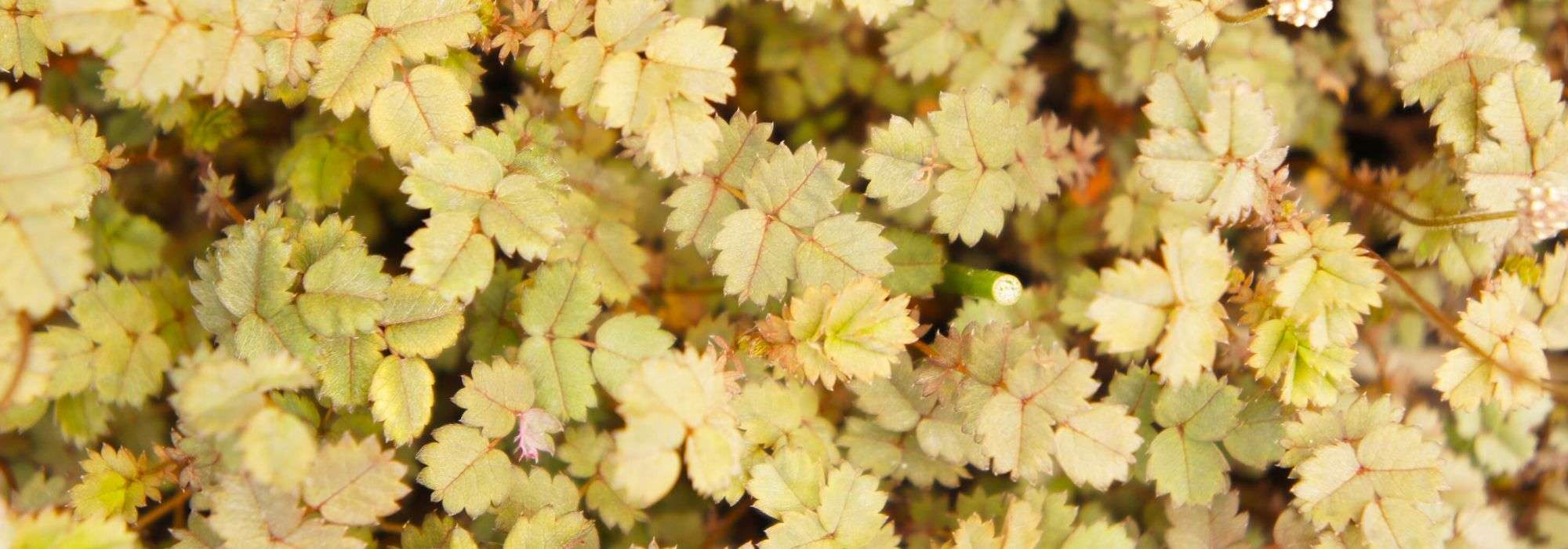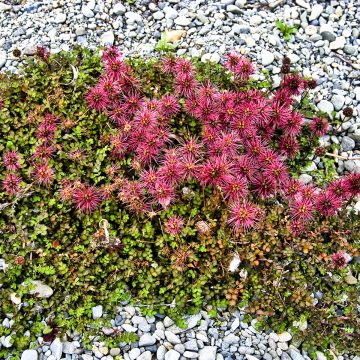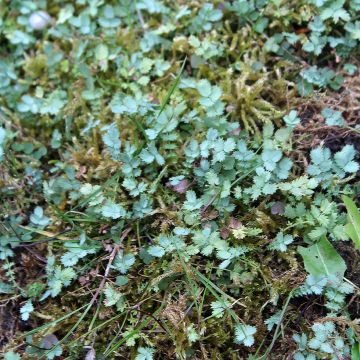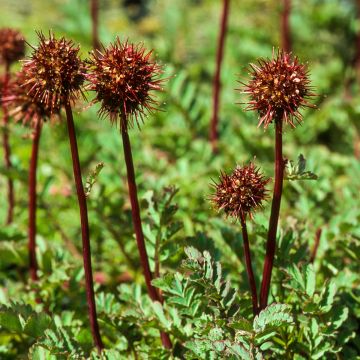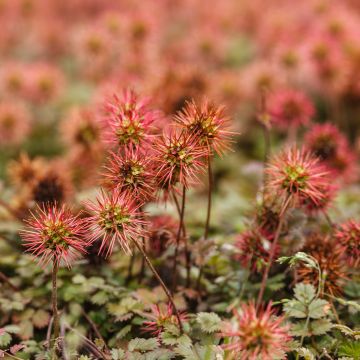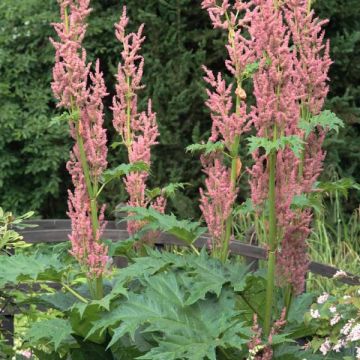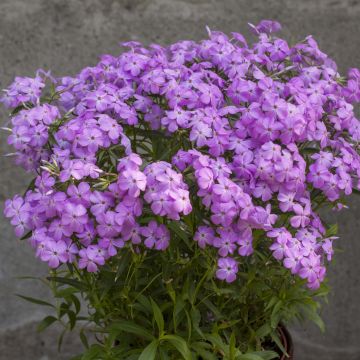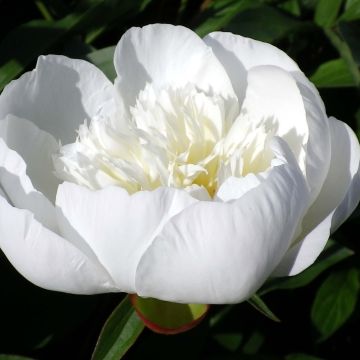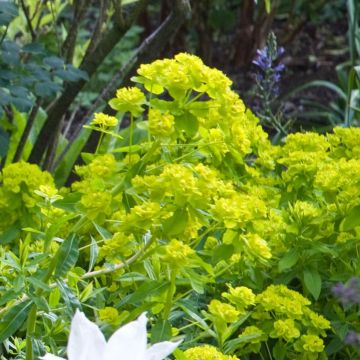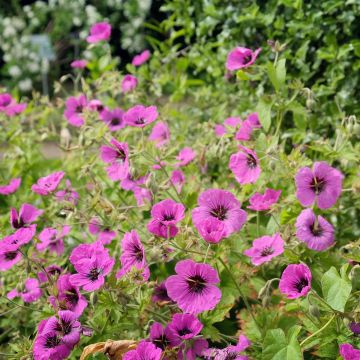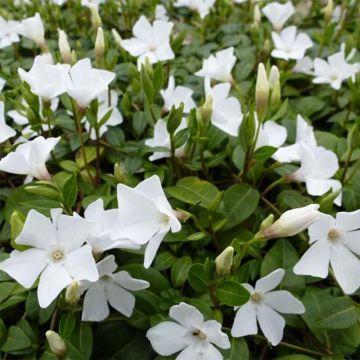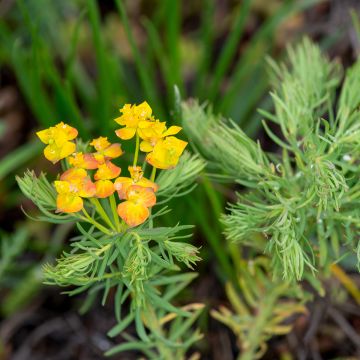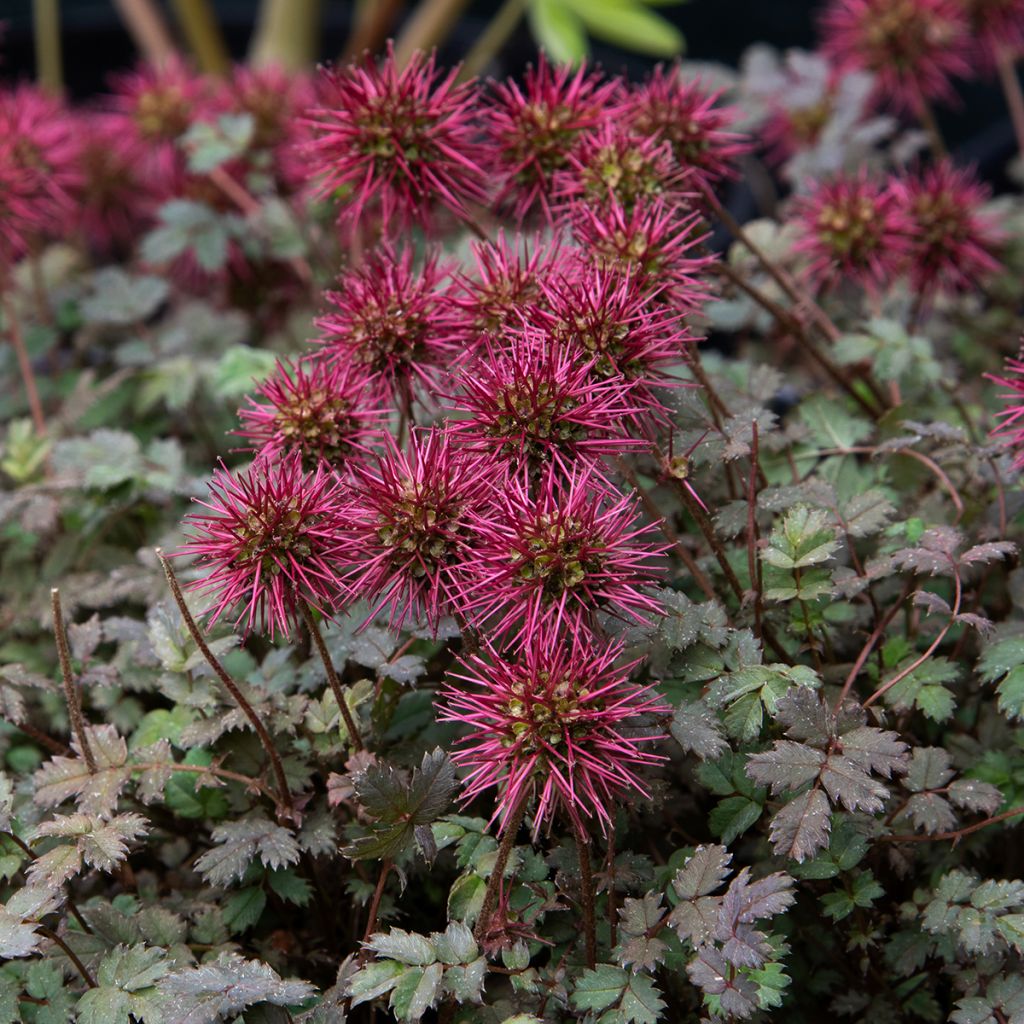

Acaena microphylla Kupferteppich
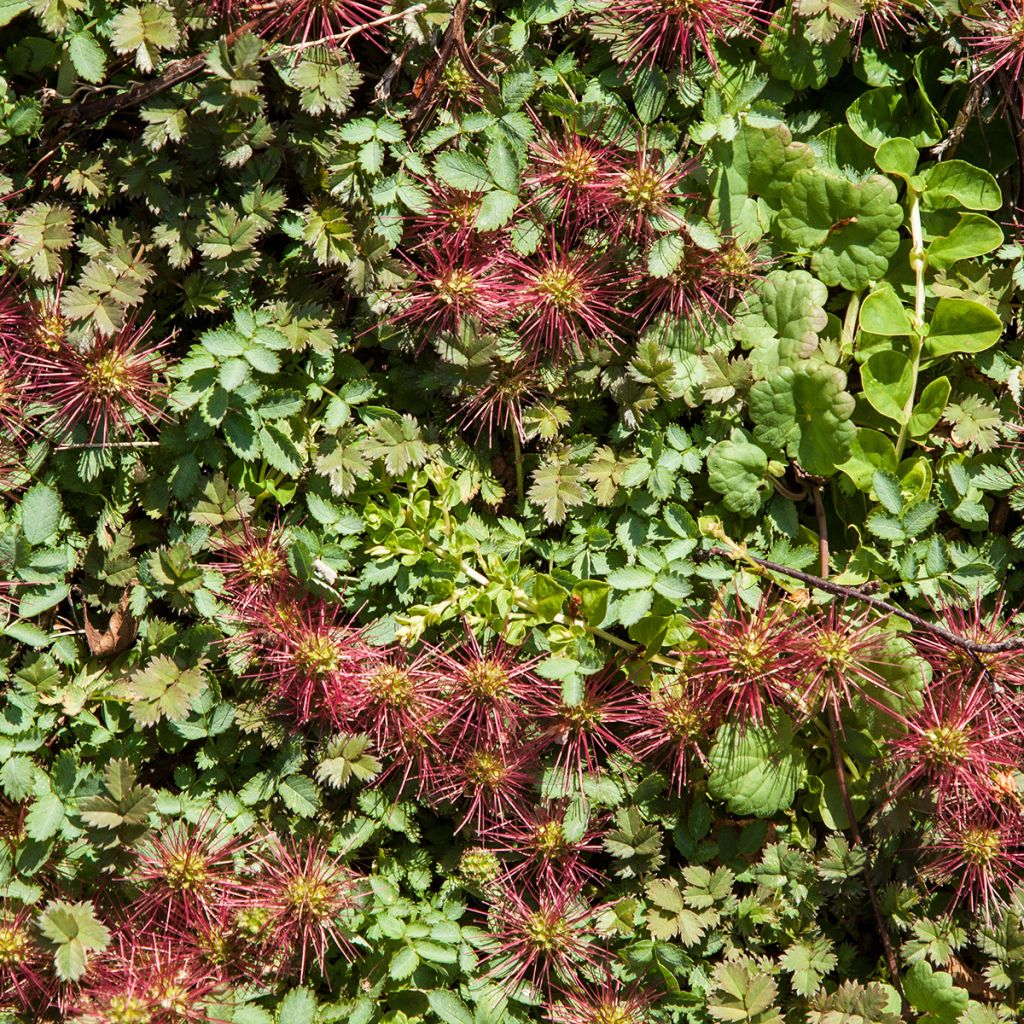

Acaena microphylla Kupferteppich
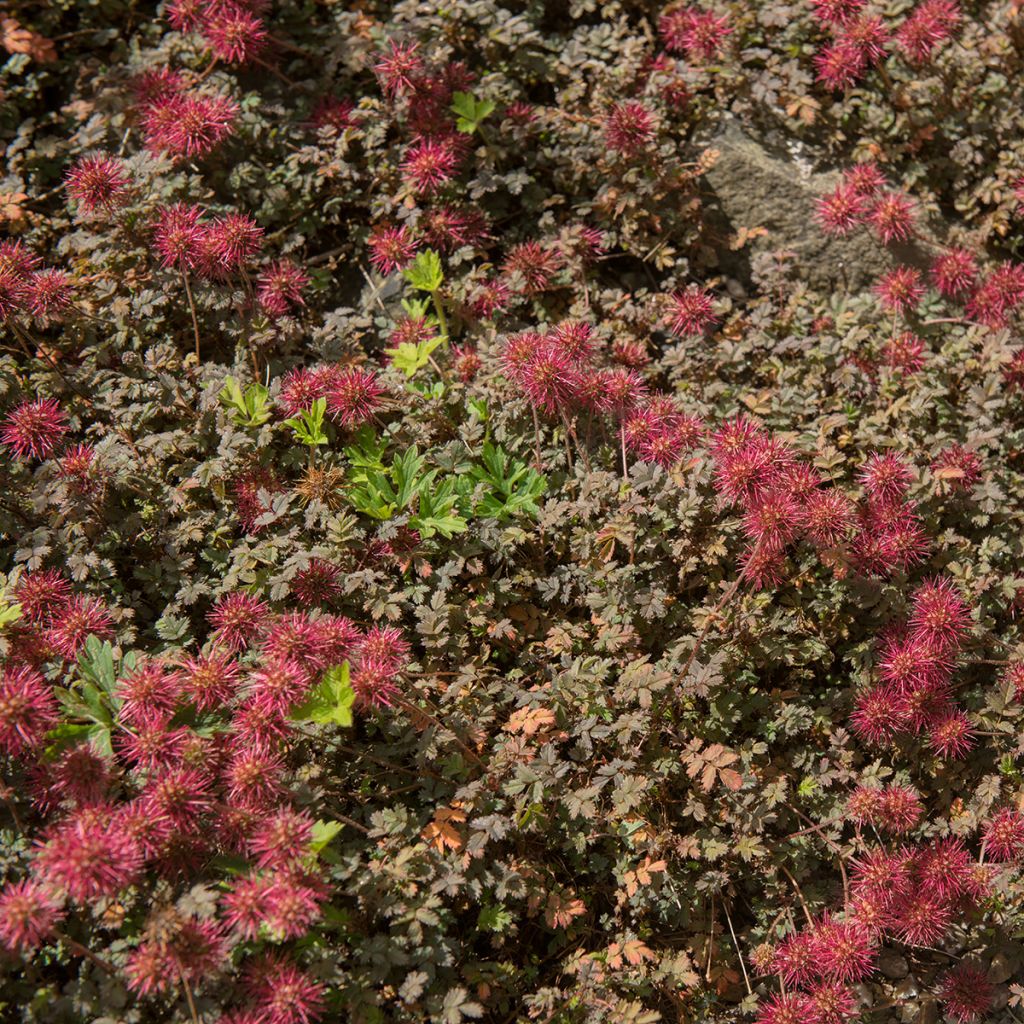

Acaena microphylla Kupferteppich
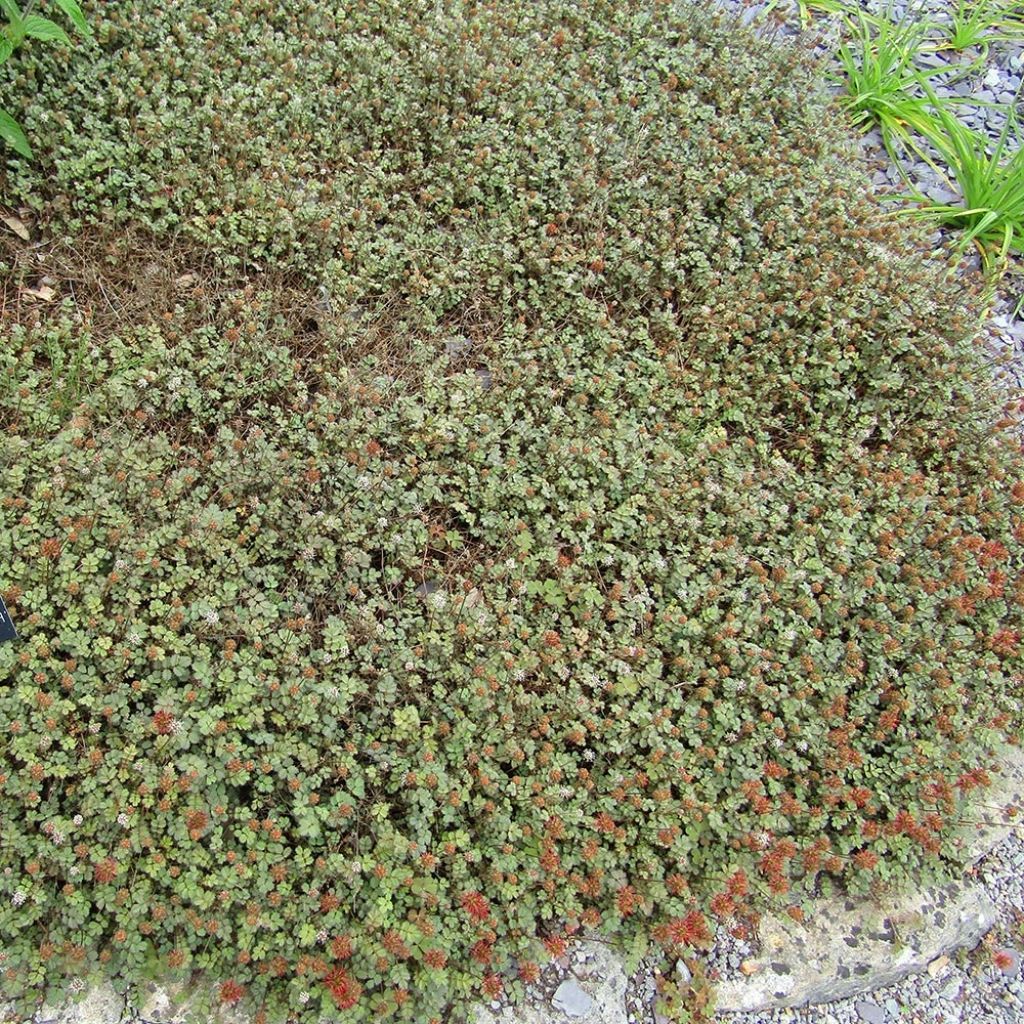

Acaena microphylla Kupferteppich
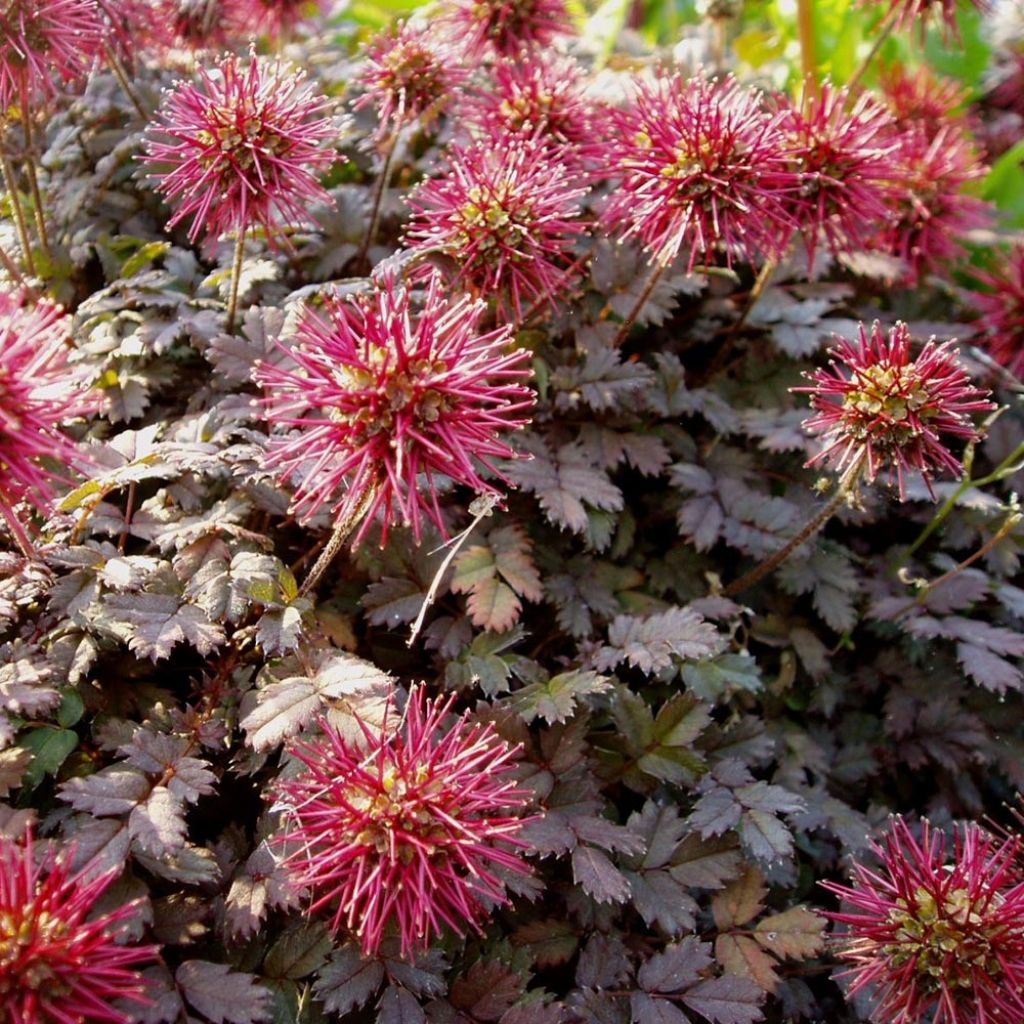

Acaena microphylla Kupferteppich
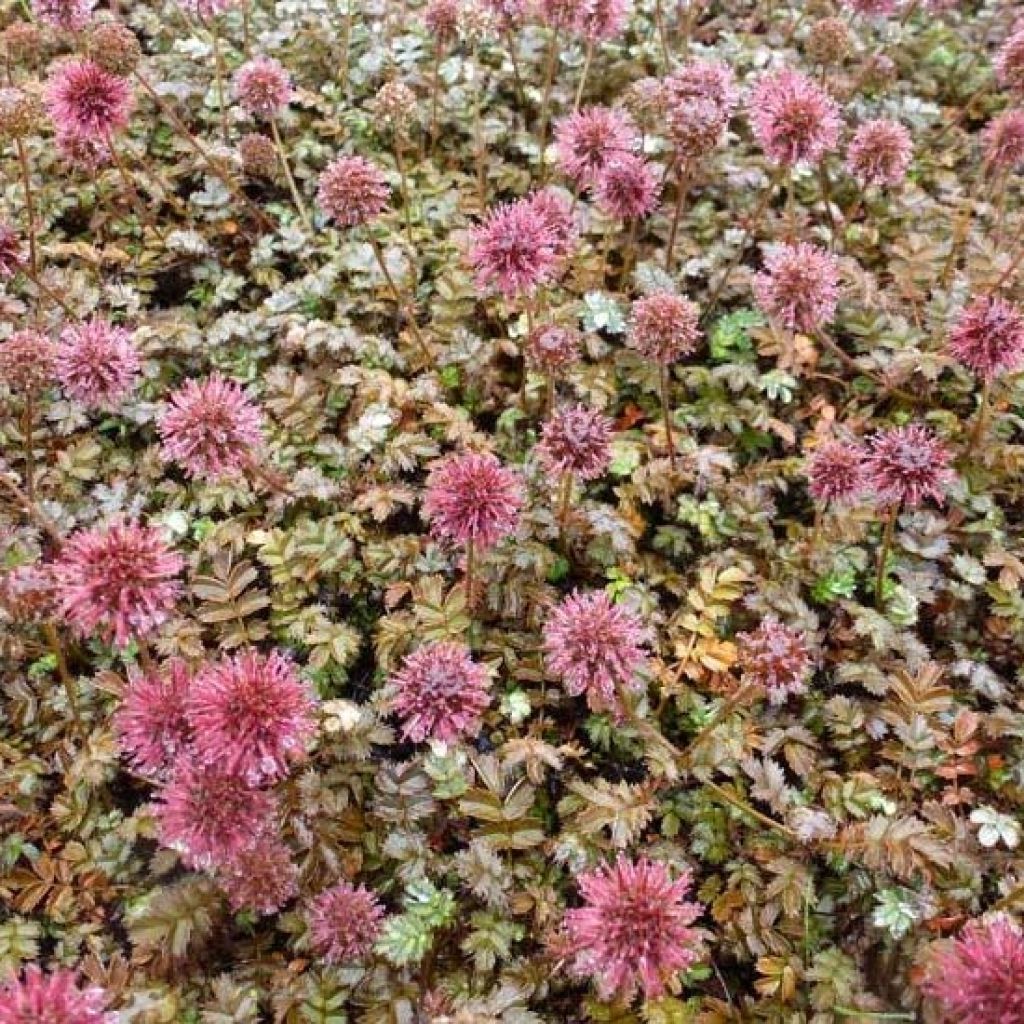

Acaena microphylla Kupferteppich
Acaena microphylla Kupferteppich
Acaena microphylla Kupferteppich
New Zealand Bur, New Zealand Burr, Rosy-spined New Zealand Bur, Small-leafed Burr
Lovely little plant.
Kathy, 27/11/2024
Special offer!
Receive a €20 voucher for any order over €90 (excluding delivery costs, credit notes, and plastic-free options)!
1- Add your favorite plants to your cart.
2- Once you have reached €90, confirm your order (you can even choose the delivery date!).
3- As soon as your order is shipped, you will receive an email containing your voucher code, valid for 3 months (90 days).
Your voucher is unique and can only be used once, for any order with a minimum value of €20, excluding delivery costs.
Can be combined with other current offers, non-divisible and non-refundable.
Home or relay delivery (depending on size and destination)
Schedule delivery date,
and select date in basket
This plant carries a 12 months recovery warranty
More information
We guarantee the quality of our plants for a full growing cycle, and will replace at our expense any plant that fails to recover under normal climatic and planting conditions.

Would this plant suit my garden?
Set up your Plantfit profile →
Description
The Acaena microphylla 'Kupferteppich', also known as the Small-leaved Barberry, is a low and original evergreen ground cover! Its tiny dark green to bronze foliage, washed with pink, and its rounded, spiky, brilliant red fruits punctuate its carpeting habit from August to September. Whether between paving stones, as a border, or in a rockery, this little plant thrives in well-drained soil, healthy in winter and not too dry in summer.
Coming from the meadows of New Zealand, the Small-leaved Barberry is one of the smallest in its genus. This perennial plant from the rose family forms a dense cushion about 30 cm (12in) wide, with pale green compound leaves finely divided into leaflets no more than 3 mm (1in) in diameter. Its foliage is evergreen in mild climates. Its leaves are carried by underground stems and roots, allowing it to spread over time. In June-July, small white-greenish flowers in the form of small spheres appear. In autumn, countless curious fruits measuring 2 to 3 cm (1in) in diameter, rounded and spiky but not prickly, and of a lovely dark pink hue, stand out above the foliage and last several weeks until the end of summer. They resemble small chestnut burrs. These fruits stick to the hair of animals, aiding in their dispersal over long distances in their native land. The Acaena microphylla 'Kupferteppich' differs from the species by its larger size, forming a 10 cm (4in) high and 50 cm (20in) wide carpet. Its leaves and fruits have bright and intense colours.
Small-leaved Barberry is a plant that thrives in almost all soils in an alpine climate, but it is generally much less demanding to grow than strictly mountain species. However, it does not tolerate very dry summers at all. Perfectly hardy, the Acaena microphylla is highly appreciated in rockeries, as a border plant, or as a ground cover at the base of bushes, accompanied by small spring bulbs and vibrant-coloured grasses such as Imperata cylindrica Red Baron. It also grows very well in containers or pots, where it will spill over the edge with ease. The Acaena can also be used on a green roof or living wall in cooler climates when combined with small sedums, houseleeks, saxifrages, or small grasses.
Acaena microphylla Kupferteppich in pictures
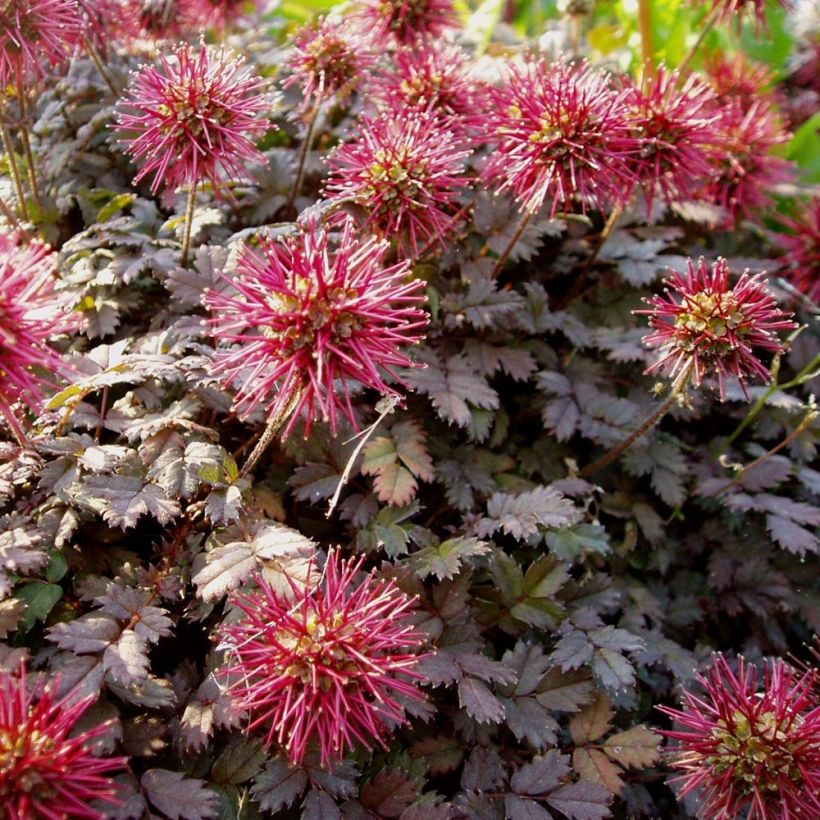

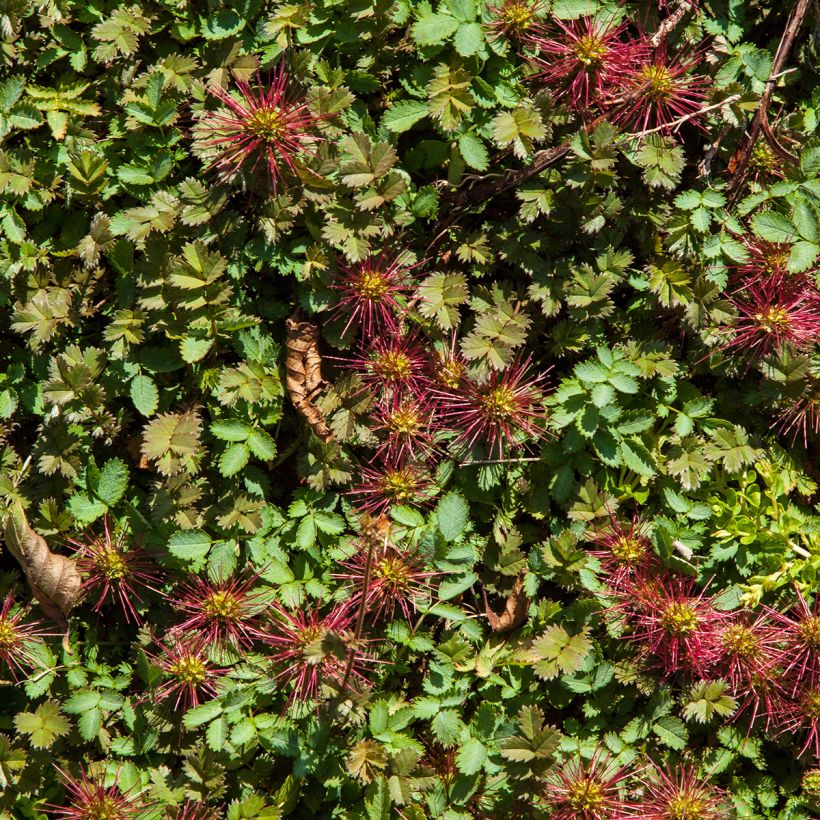



Flowering
Foliage
Plant habit
Botanical data
Acaena
microphylla
Kupferteppich
Rosaceae
New Zealand Bur, New Zealand Burr, Rosy-spined New Zealand Bur, Small-leafed Burr
Cultivar or hybrid
Other Acaena
View all →Planting and care
The Acaena microphylla 'Kupferteppich' prefers to grow in well-drained soil that can even be poor, fresh, rocky, or limestone, with a sunny to slightly shaded exposure. Ensuring that the soil does not completely dry out during summer is vital. During the early stages, it is essential to protect the young plants from weeds that could harm their establishment. Once the plant is well established, its dense growth strongly limits the appearance of weeds by preventing their seeds from reaching the soil to germinate. It is recommended to remove the creeping stems to prevent the plant from spreading too far.
Planting period
Intended location
Care
Planting & care advice
-
, onOrder confirmed
Reply from on Promesse de fleurs
Similar products
Haven't found what you were looking for?
Hardiness is the lowest winter temperature a plant can endure without suffering serious damage or even dying. However, hardiness is affected by location (a sheltered area, such as a patio), protection (winter cover) and soil type (hardiness is improved by well-drained soil).

Photo Sharing Terms & Conditions
In order to encourage gardeners to interact and share their experiences, Promesse de fleurs offers various media enabling content to be uploaded onto its Site - in particular via the ‘Photo sharing’ module.
The User agrees to refrain from:
- Posting any content that is illegal, prejudicial, insulting, racist, inciteful to hatred, revisionist, contrary to public decency, that infringes on privacy or on the privacy rights of third parties, in particular the publicity rights of persons and goods, intellectual property rights, or the right to privacy.
- Submitting content on behalf of a third party;
- Impersonate the identity of a third party and/or publish any personal information about a third party;
In general, the User undertakes to refrain from any unethical behaviour.
All Content (in particular text, comments, files, images, photos, videos, creative works, etc.), which may be subject to property or intellectual property rights, image or other private rights, shall remain the property of the User, subject to the limited rights granted by the terms of the licence granted by Promesse de fleurs as stated below. Users are at liberty to publish or not to publish such Content on the Site, notably via the ‘Photo Sharing’ facility, and accept that this Content shall be made public and freely accessible, notably on the Internet.
Users further acknowledge, undertake to have ,and guarantee that they hold all necessary rights and permissions to publish such material on the Site, in particular with regard to the legislation in force pertaining to any privacy, property, intellectual property, image, or contractual rights, or rights of any other nature. By publishing such Content on the Site, Users acknowledge accepting full liability as publishers of the Content within the meaning of the law, and grant Promesse de fleurs, free of charge, an inclusive, worldwide licence for the said Content for the entire duration of its publication, including all reproduction, representation, up/downloading, displaying, performing, transmission, and storage rights.
Users also grant permission for their name to be linked to the Content and accept that this link may not always be made available.
By engaging in posting material, Users consent to their Content becoming automatically accessible on the Internet, in particular on other sites and/or blogs and/or web pages of the Promesse de fleurs site, including in particular social pages and the Promesse de fleurs catalogue.
Users may secure the removal of entrusted content free of charge by issuing a simple request via our contact form.
The flowering period indicated on our website applies to countries and regions located in USDA zone 8 (France, the United Kingdom, Ireland, the Netherlands, etc.)
It will vary according to where you live:
- In zones 9 to 10 (Italy, Spain, Greece, etc.), flowering will occur about 2 to 4 weeks earlier.
- In zones 6 to 7 (Germany, Poland, Slovenia, and lower mountainous regions), flowering will be delayed by 2 to 3 weeks.
- In zone 5 (Central Europe, Scandinavia), blooming will be delayed by 3 to 5 weeks.
In temperate climates, pruning of spring-flowering shrubs (forsythia, spireas, etc.) should be done just after flowering.
Pruning of summer-flowering shrubs (Indian Lilac, Perovskia, etc.) can be done in winter or spring.
In cold regions as well as with frost-sensitive plants, avoid pruning too early when severe frosts may still occur.
The planting period indicated on our website applies to countries and regions located in USDA zone 8 (France, United Kingdom, Ireland, Netherlands).
It will vary according to where you live:
- In Mediterranean zones (Marseille, Madrid, Milan, etc.), autumn and winter are the best planting periods.
- In continental zones (Strasbourg, Munich, Vienna, etc.), delay planting by 2 to 3 weeks in spring and bring it forward by 2 to 4 weeks in autumn.
- In mountainous regions (the Alps, Pyrenees, Carpathians, etc.), it is best to plant in late spring (May-June) or late summer (August-September).
The harvesting period indicated on our website applies to countries and regions in USDA zone 8 (France, England, Ireland, the Netherlands).
In colder areas (Scandinavia, Poland, Austria...) fruit and vegetable harvests are likely to be delayed by 3-4 weeks.
In warmer areas (Italy, Spain, Greece, etc.), harvesting will probably take place earlier, depending on weather conditions.
The sowing periods indicated on our website apply to countries and regions within USDA Zone 8 (France, UK, Ireland, Netherlands).
In colder areas (Scandinavia, Poland, Austria...), delay any outdoor sowing by 3-4 weeks, or sow under glass.
In warmer climes (Italy, Spain, Greece, etc.), bring outdoor sowing forward by a few weeks.






























